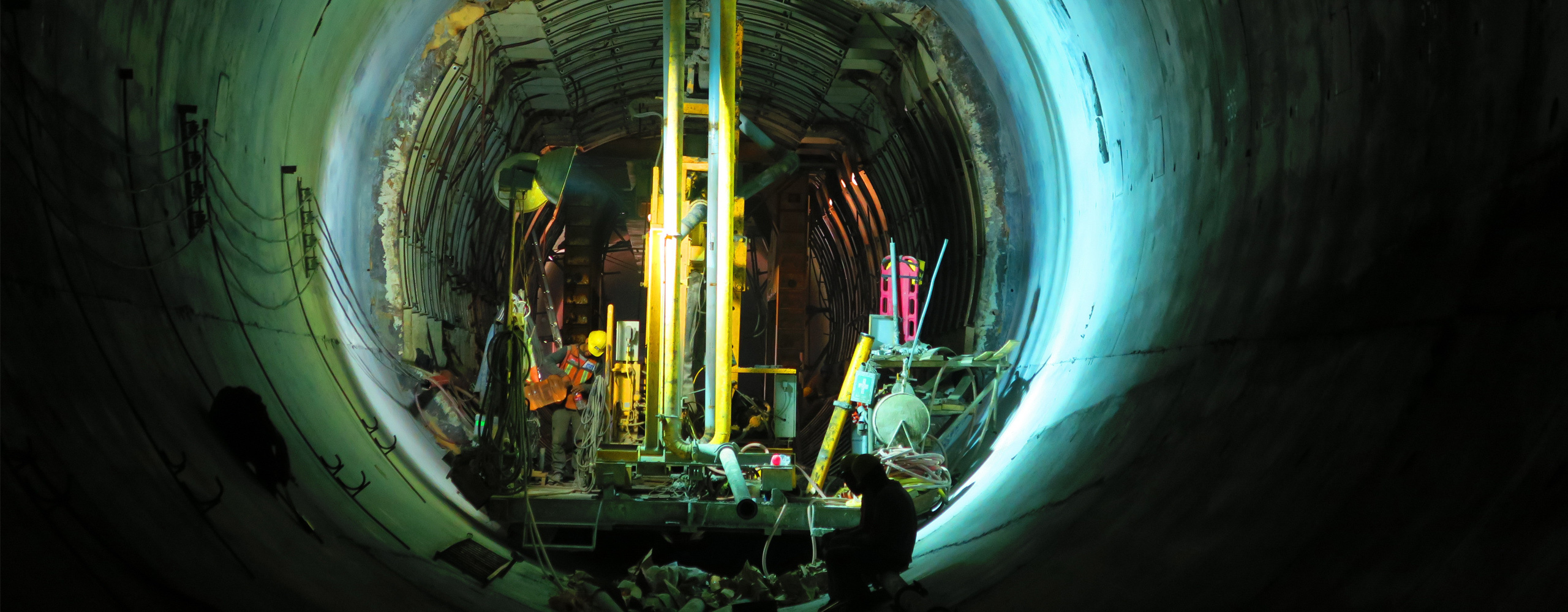Numerical Assessment of an Overall Instability at Bajo de La Alumbrera Mine
Project Description
Located in Catamarca Argentina, the Bajo de La Alumbrera open pit mine experienced a large-scale instability along its southwestern wall on May 31, 2017. Referred to as the Steve-event, this failure mobilized approximately 700,000 t of rock from the peripheric level (2630 m) to the working area (2169 m) - a height of about 460 m (Figure 1) - interrupting mining for Pushback-12, the last productive mine sector. In 2012, Itasca had conducted predictive 3DEC numerical analysis on another, more aggressive, slope design, which suggested that a large-scale instability was possible in the same area (Figure 2).
Itasca performed additional numerical modelling analyses to back-analyze the 2017 instability to predict Factor of Safety (FS) contours and consider options to mine the remaining ore at the bottom of the pit.
Itasca's Role
For the complexity of the failure mechanism, empirical and limit equilibrium methods were deemed insufficient to perform the back-analysis. Given its good predictive results from 2012 and the three-dimensional nature of the failure mechanism, 3DEC was again selected to model the open pit for the required back-analysis.
Using the 2012 analysis as the starting point, the analysis was calibrated using field observations, where the geometry of mining excavations and structural interpretation were key inputs. Figure 3 shows a joint system and the projected Steve 4 (S4) and Steve 5 (S5) faults. The calibrated model was used to study excavation alternatives to resume mining of Pushback-12 whilst still meeting the required acceptance criterion (FS > 1.2).
Project Results
In general, Itasca’s 3DEC modeling of the Steve event at Bajo de La Alumbrera Mine demonstrates a clear advantage for using numerical modeling tools for slope design to (1) identify potential failure mechanisms and (2) quantify overall slope stability.
The 3DEC model developed to back-analyze the instability achieved a good match with field observations. Figure 4 shows the calibration results as FS contours for each excavation stage in the 3DEC model. The estimated failed volume in the field was approximately 336,000 m3. The numerical model estimated a similar volume, 356,000 m3, based on the failed rock mass shown in red (for FS < 1.0).
In order to continue mining Pushback-12, the 3DEC modeling showed that a 204-m-high unloading excavation was required in order to maintain the acceptable criterion of the slope design (defined by FS ≥ 1.2). This alternative was assessed as uneconomic by the mine, leading to the total closure of Pushback-12 and the mine.
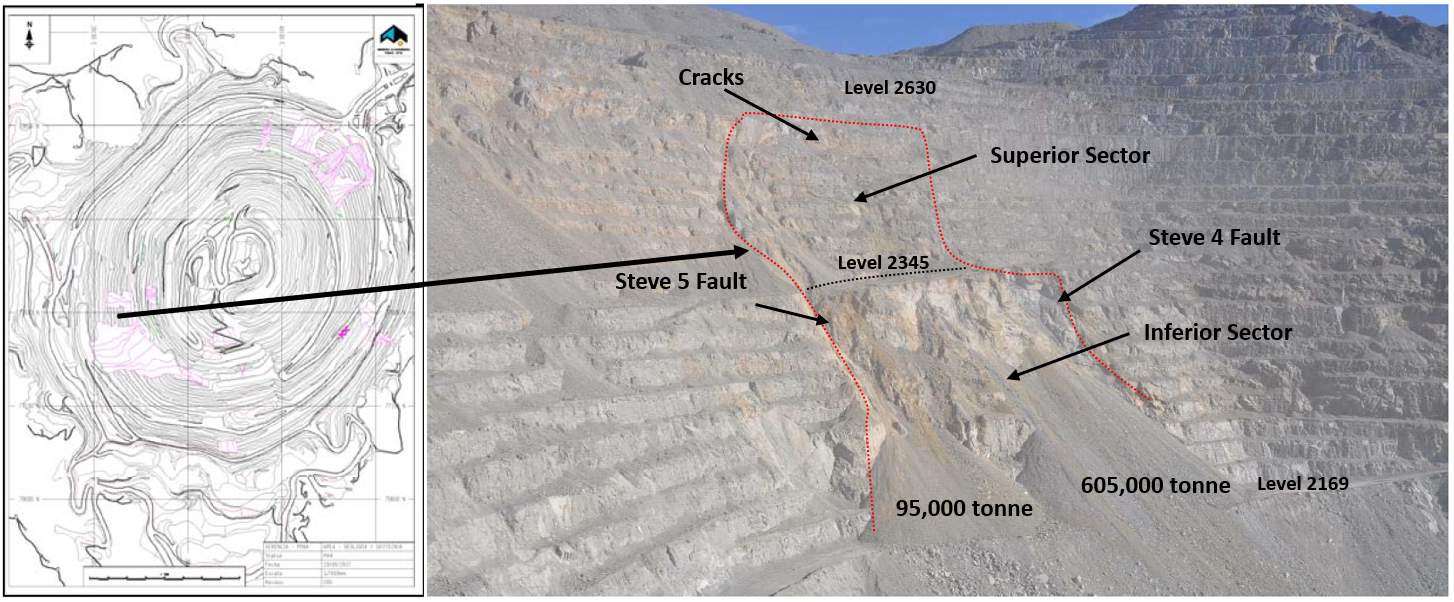
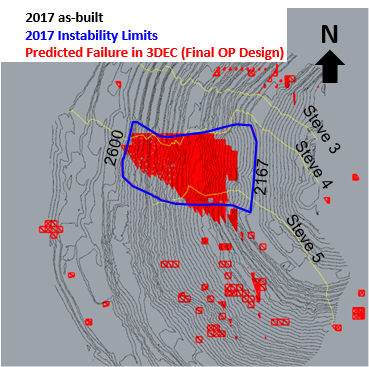
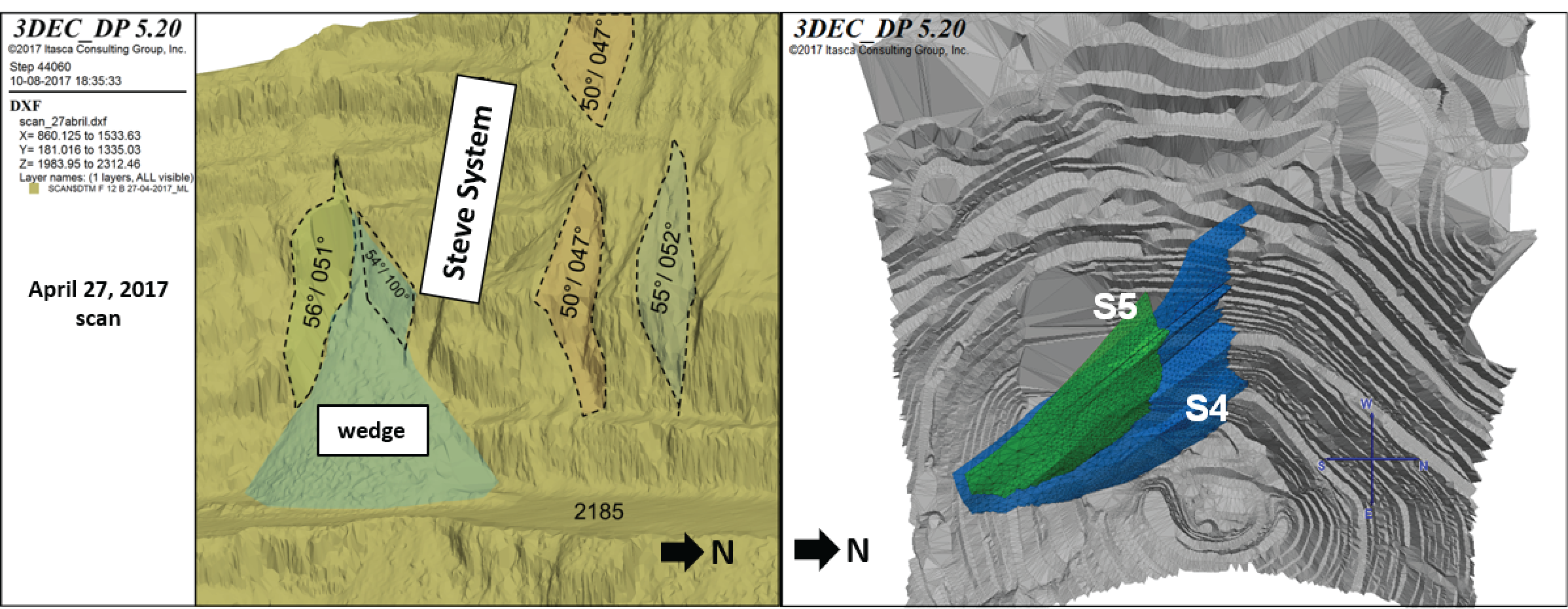
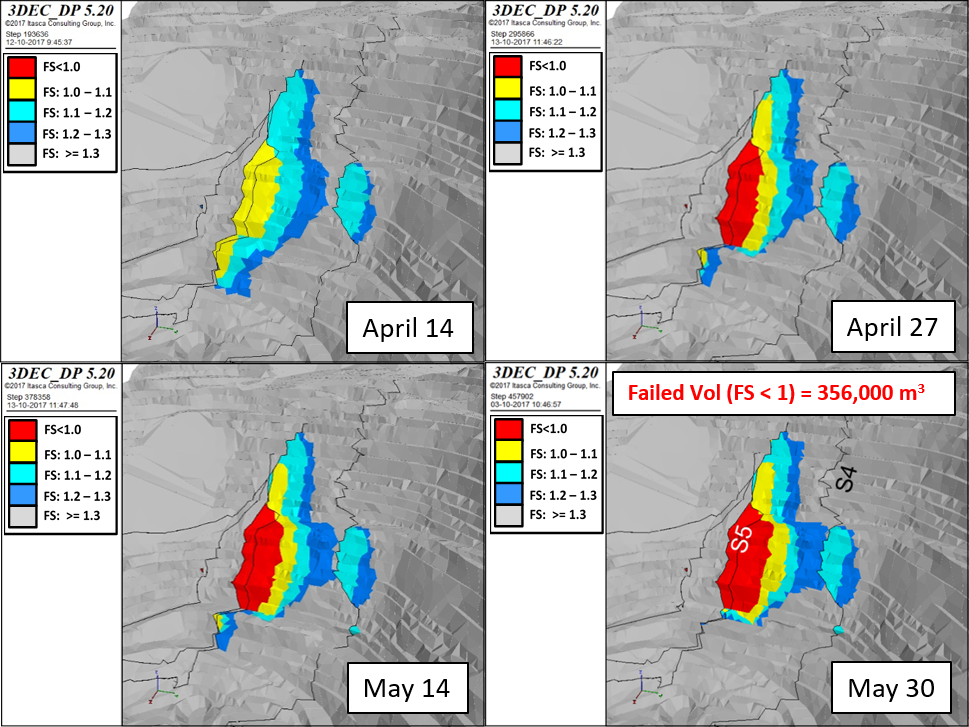
References
Cancino, C. F., R. Silva and C. Giraud. (2021) “Numerical assessment of an overall instability at Bajo de la Alumbrera Mine," in SSIM 2021 (Proceedings, Second International Slope Stability in Mining, Perth, Australia, October 2021), 27–36, P. M. Dight, Ed. Perth: Australian Centre for Geomechanics.
